Supplies running lowpublished at 14:15 BST 1 July 2016
Water and ammunition are in short supply for the Ulstermen.
Battle of the Somme - as it happened
Almost 20,000 British soldiers were killed on the opening day of the battle
2,069 men from the 36th Ulster Division were killed at the Somme on 1 July 1916
All times are +1 hour BST
Picture: Attack on Thiepval, Getty Images
Eunan McConville and Lee Costello
Water and ammunition are in short supply for the Ulstermen.
To The Ulsters' right and left, the other divisions are still struggling.
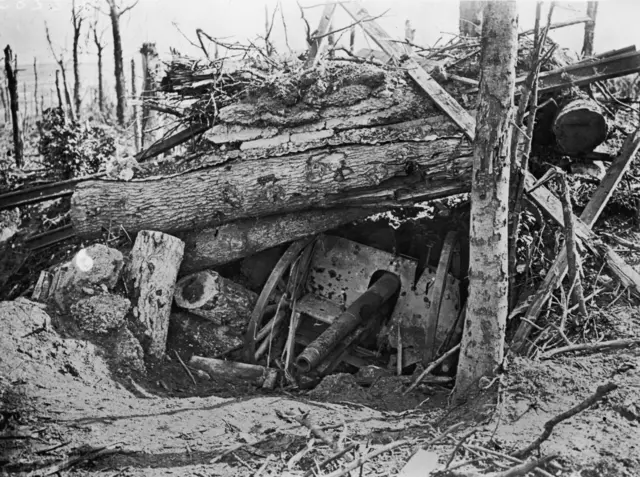 Image source, Getty Images
Image source, Getty ImagesThe Ulster Division is in serious trouble. The constant fire from the Germans is causing casualties to rack up.
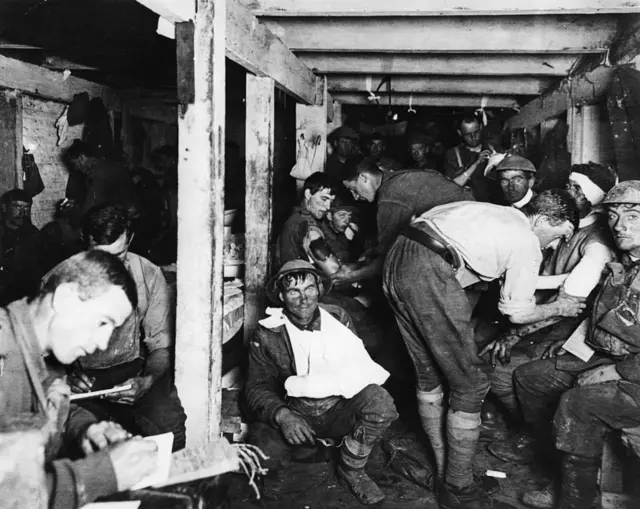 Image source, Getty Images
Image source, Getty Images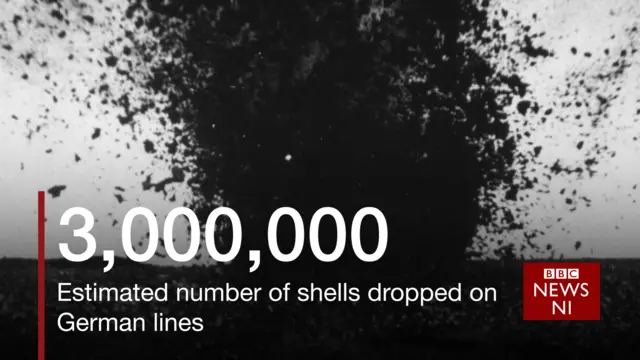
By early afternoon, the remaining Ulstermen at the Schwaben Redoubt are getting hammered by artillery and facing machine gun fire on three sides.
 Image source, Getty Images
Image source, Getty ImagesThe man in charge of the Ulster Division's sector is Lieutenant General Sir Thomas Morland. Major General Edward Perceval - who commands the 12,000 strong reserve division - goes to see Morland. Perceval suggests committing the reserves to support the Ulstermen at Schwaben. Morland says no, stick to the original plan. Morland's decision will have disastrous consequences for the 36th Ulster Division.
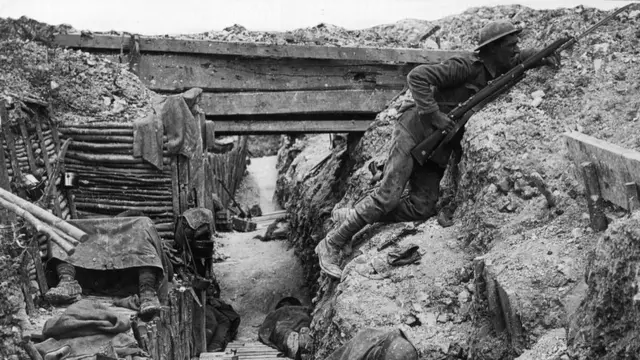 Image source, Getty Images
Image source, Getty ImagesBut the Ulsters have caught up with their own artillery - British shells are raining down on them. They're taking fire from German machine guns, riflemen and artillery as well. One soldier described this point of the first day as "hell". The Ulstermen have to turn back.
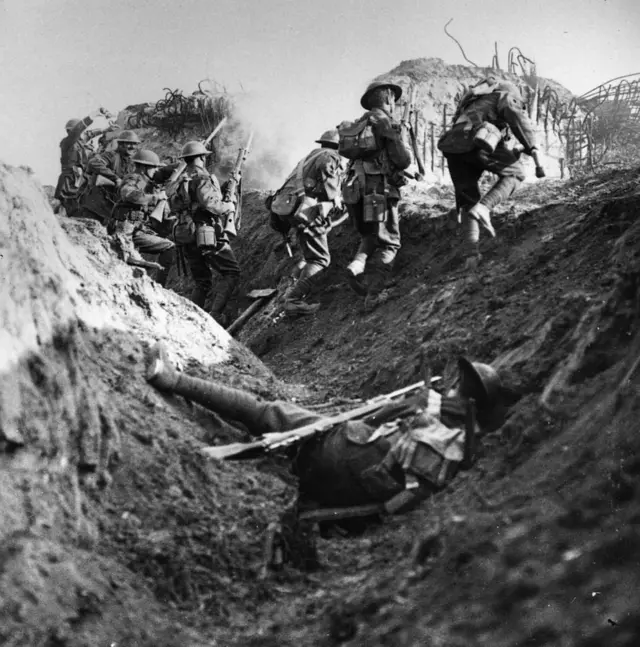 Image source, Getty Images
Image source, Getty ImagesSome of the Ulstermen get as far as the second German line, but can't get through the barbed wire. Nowhere else, along the entire line, do any British soldiers make it as far as the Germans' second line of defence.
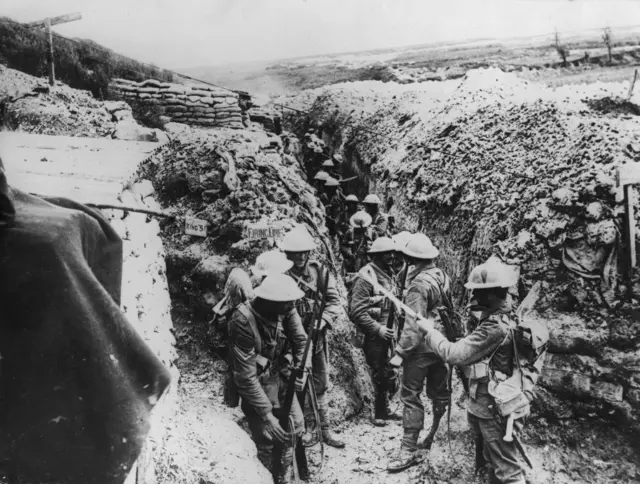 Image source, Getty Images
Image source, Getty ImagesA number of Ulster Division soldiers advance over the open ground towards the second German line.
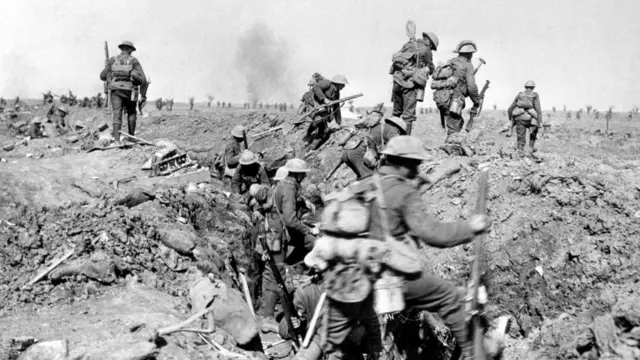 Image source, PA
Image source, PAGood news from the south. The French have managed to take a most of their objectives, while suffering very few casualties.
 Image source, Getty Images
Image source, Getty Images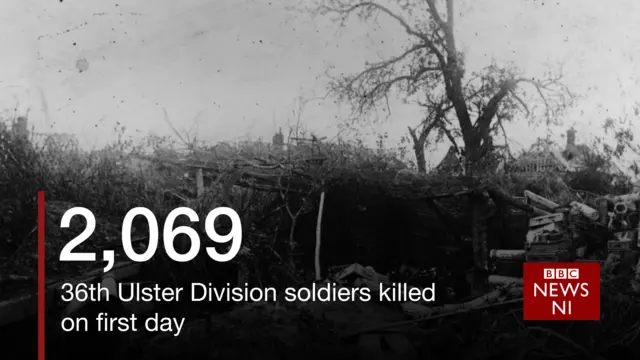
The Royal Dublin Fusiliers are out of their trenches and into battle north of the 36th Division, near the village of Beaumont Hamel. Most of them are cut down by German machine guns.
 Image source, Getty Images
Image source, Getty Images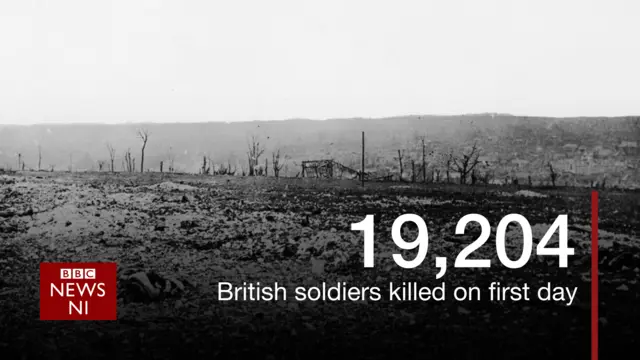
The British Army has already suffered about 50,000 casualties.
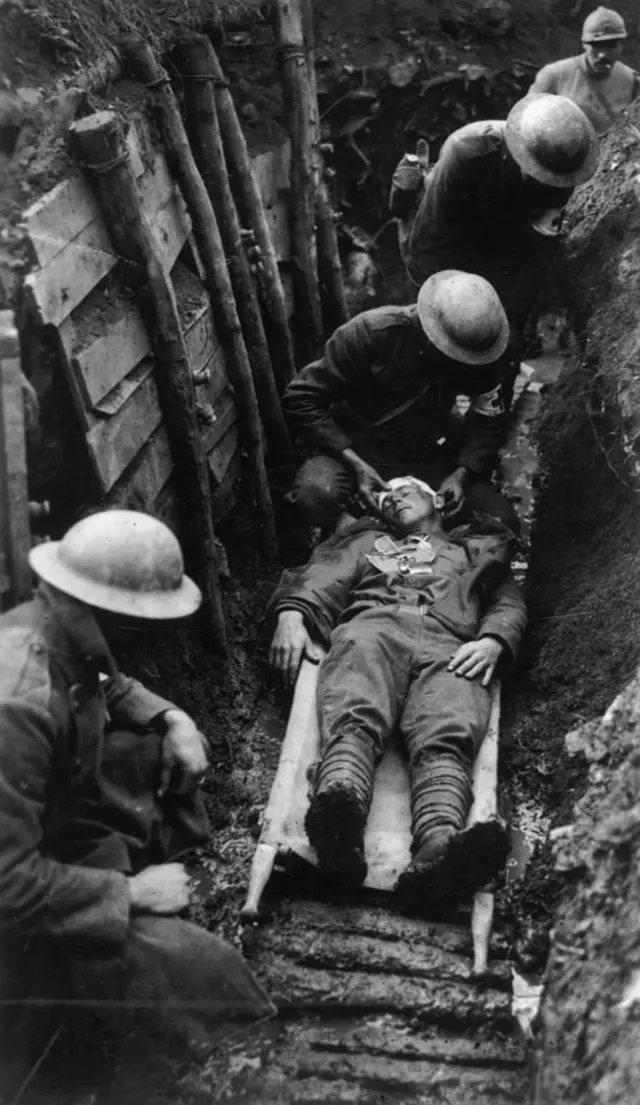 Image source, Getty Images
Image source, Getty ImagesDay by day throughout 2016, BBC Northern Ireland will be telling the story of a tumultuous year in the history of Ireland through the eyes of the people who lived it. These personal accounts will unfold over the coming months on these pages and on @BBCVoices16, external.
http://www.bbc.co.uk/events/e2d5v2
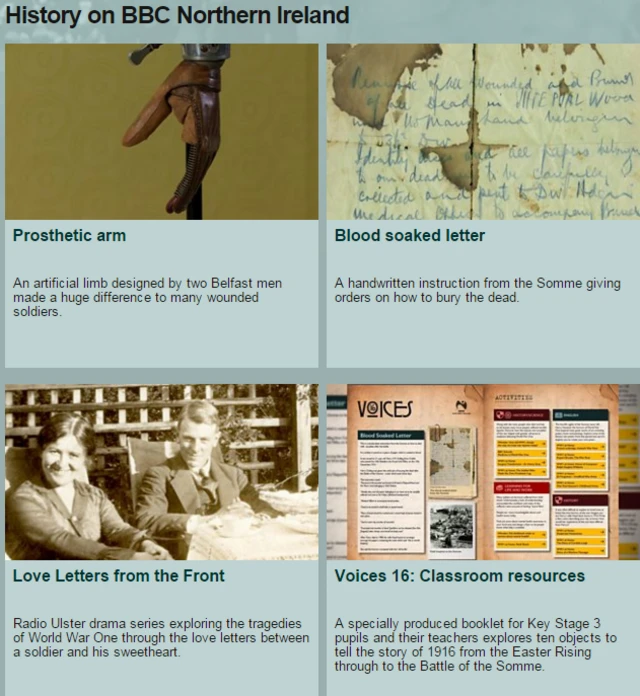
Ever wondered what life would have been like for you 100 years ago? Based on your gender & location, we can draw up the most likely scenario which would have faced YOU in World War One.
http://www.bbc.co.uk/taster/projects/your-somme
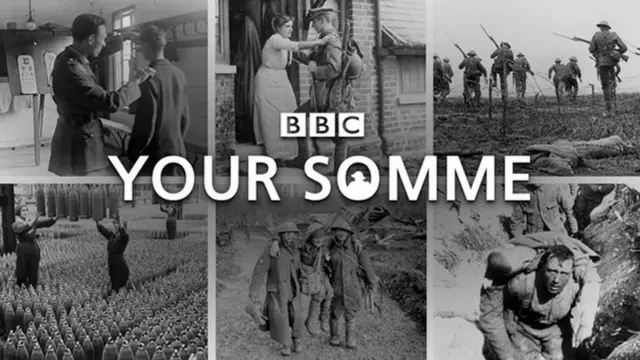
Instead, the Ulsters get busy moving towards the German second line. This is something they've trained for. But their numbers are low.
 Image source, Family Photographs / North Down Museum
Image source, Family Photographs / North Down MuseumThe Ulster Division practiced trench warfare before being sent to the Somme
A patrol from the Ulster Division finds an empty trench running towards Thiepval. But there are no higher ranking officers at Schwaben., so no order to attack the village's rear is given.
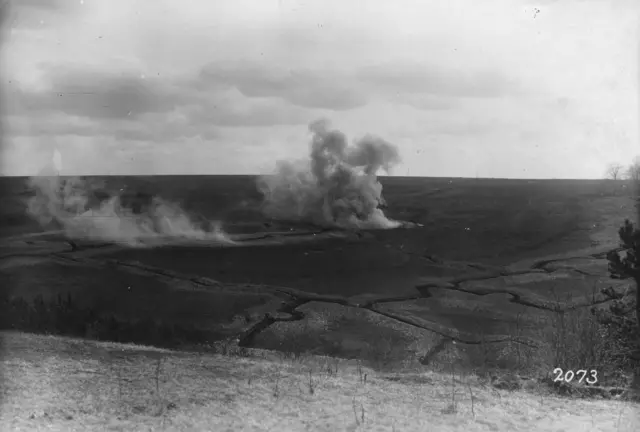 Image source, Getty Images
Image source, Getty ImagesWhile The 36th Ulster Division has made superb progress, other British divisions in the Thiepval sector are struggling.
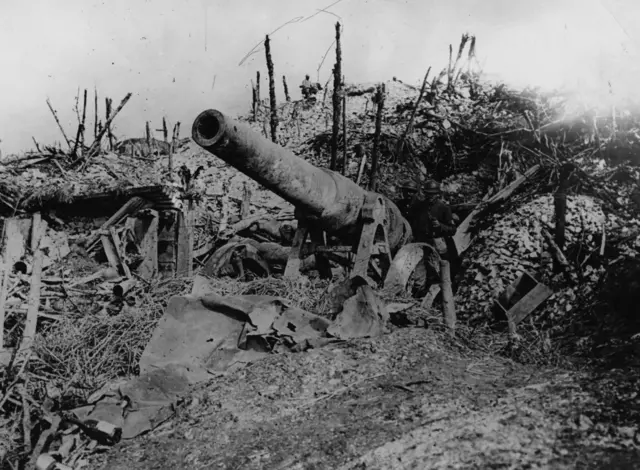 Image source, Getty Images
Image source, Getty ImagesAbout 500 Germans have been taken prisoner.
 Image source, Getty Images
Image source, Getty Images